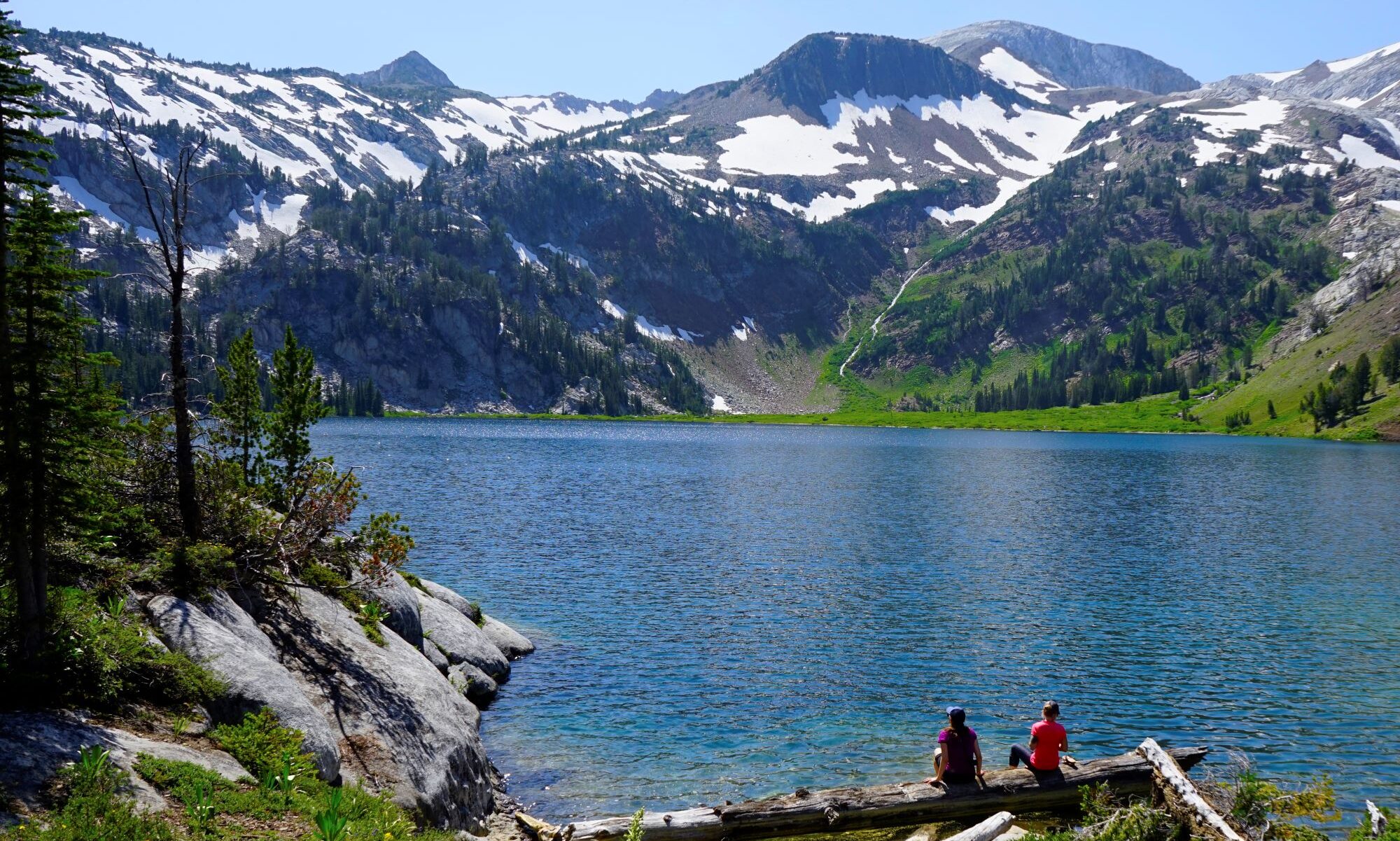 |
|
Ernie Goble on the approach to Mt. Hood, 1956.
Photo: Walter Goble. |
In the summer of 1958, Ernest “Ernie” Goble was taking a well-deserved break on the saddle between North and Middle Sister. While admiring the majestic view of the Cascades, another climber took refuge on the opposite side of the room-sized rock. Suddenly, the huge rock shifted and started to roll. Ernie’s father, Walter, rushed to grab him and pull him out of danger. Although his father’s quick thinking saved him, the rock rolled by close enough to rip the shoulder on Ernie’s parka. In his six-year quest to climb all of the 16 major peaks in the Northwest, this was the only dangerous situation that young Ernie encountered. He was 13 years old at the time and already an accomplished climber.
 |
|
Sahale Flanagan and Margaret Redman at the 1988
Annual Banquet. Photo: Unknown. |
The Explorer Post program proved popular with the membership. The program expanded in 1978, and then again in 1981. It fell on hard times in the late 1980s before consolidating and reigniting as Post 936 in 1993. The end of the 1990s were good years for the Explorer Post; the program’s leadership was motivated, enrollment was high, and their adventures captivated the membership. A few of Post 936’s notable achievements included climbing in New Zealand in 1996, four first ascents in the Canadian Coast Range in 1997, and organizing the 20th Anniversary celebration for the American K2 Expedition in 1998.
 |
|
Ernie Goble on the summit to Mt. Stuart, 1960.
Photo: Walter Goble |
 |
| The Families Mountaineering 101 program at Horsethief Butte in 2015. |
At age fourteen, Quentin had earned the Oregon Cascades award and by age 19 he had achieved the summits of all the 16 major peaks. Long time Mazama climb leader Dick Miller was instrumental in Quentin’s climbing career. Over his 12 year quest to get all 16 peaks, Miller was a teacher, mentor, and friend. One of Quentin’s most treasured mementos of his early climbing is the modified ice ax made for him by Dick. In modifying the full-size SMC axe, Miller cut down the shaft, dulled all the sharp edges, and stamped Quentin’s initials in the head.
 |
| Quentin on his first climb in the Goat Rocks. |
The Mazamas interest in engaging young mountaineers has changed and expanded as the membership has grown. The Mazama Families Committee, begun in 2013, focuses on getting families outside together. Leaders in the group teach kids the joys of mountaineering in a way that instills a sense of joy and brings them back. They aim to build a community where children and parents learn from mentors and experienced climbers in the organization. The committee currently offers a Families Mountaineering 101 course that teaches kids and adults entry level rock and snow climbing skills. In the past year, Mazama Families members have put those skills to work hiking Dog Mountain, skiing Mt. Hood Meadows, and climbing at Smith Rocks, among other events.
 |
| Quentin Carter on the summit of South Sister in 2004. |
One of the legacies of getting youth involved with mountaineering is the formation of a lifelong affinity for the sport and the Mazamas. Many of the youngsters that started climbing with the Mazamas as part of the Explorer Post program have stuck with it. The odds are good that many of the young kids in the Mazama Families initiative will go on to be adult climbers. Now in his early 20s, Quentin has aspirations to one day become a climb leader like Dick Miller, his mentor and favorite climber. As for Ernie, after many years away from the sport, on his 68th birthday he climbed Mount St. Helens with his daughter, herself a third-generation Mazama.
Quentin Carter
 |
| Quentin Carter on the summit of Mt. Shuksan in 2014. |
His final climb to complete the 16 major NW peaks.Matt Carter first took his son Quentin out hiking at age two, and by four, they were camping. Before starting his 16 peak quest, at age eight on Old Snowy, he’d already explored Yosemite and City of Rocks among others. Like many others, he’d planned on doing Mt. Hood as his first official Mazama climb, but a climbing accident and a helicopter crash on the mountain that season forced a change in plans. They ended up climbing Unicorn Peak instead. His second climb, Mt. Adams, in 2002 was almost his last. During a glissade on the descent, Quentin’s pants filled with snow, and he became hypothermic. Quick work by members of the climbing team got him out of his wet clothes and warmed up. For his fourth Mazama climb, Mt. Hood in 2003, Dick Miller presented Quentin with his custom modified ice ax and crampons. As his climbing career progressed, Quentin’s father insisted that he have advanced training. Besides taking part in Mazamas training, they also took 12 days of intense climbing education in the North Cascades as part of the American Alpine Institute’s Alpine Leadership class. Quentin went on to assist on several of his later summits, including Mt. Baker and Mt. Shuksan, his 16th peak.









